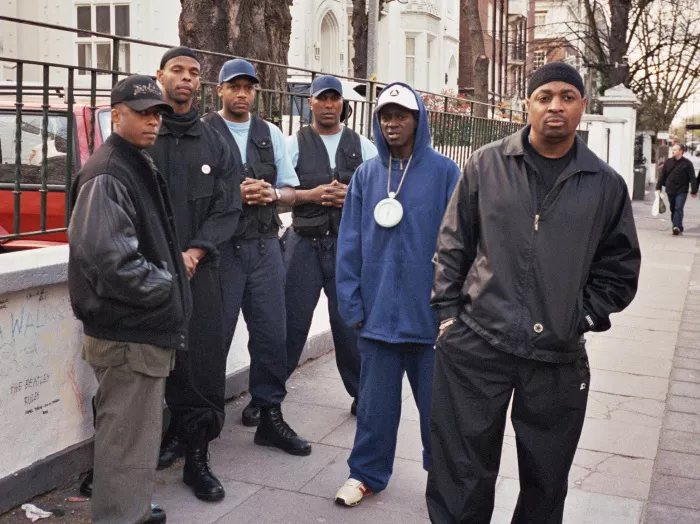In the vibrant landscape of hip-hop music, there exists a subgenre known for its raw intensity, aggressive delivery, and unapologetic lyricism – hard rap. Characterized by its gritty beats, confrontational rhymes, and streetwise attitude, hard rap has carved out a niche within the broader hip-hop culture. In this article, we delve deep into the roots, evolution, and defining characteristics of hard rap, shedding light on its significance within the realm of contemporary music.
Origins and Influences
To grasp the essence of hard rap, it’s essential to understand its origins and the cultural landscape from which it emerged. Hard rap traces its roots back to the streets of urban America, particularly in neighborhoods marked by poverty, crime, and social unrest. Emerging in the late 1980s and early 1990s, hard rap reflected the harsh realities and struggles faced by inner-city youth, serving as a voice for the marginalized and disenfranchised.
One of the seminal influences on hard rap was gangsta rap, a subgenre that gained prominence on the West Coast with artists like N.W.A (Niggaz Wit Attitudes), Ice-T, and Dr. Dre. Gangsta rap provided a blueprint for hard-hitting, socially conscious lyrics that explored themes such as street violence, police brutality, and the complexities of urban life. Tracks like N.W.A’s “Straight Outta Compton” and Ice-T’s “6 ‘N the Mornin'” laid the groundwork for the gritty storytelling and unapologetic realism that would come to define hard rap.
Defining Characteristics
At its core, hard rap is distinguished by its uncompromising portrayal of street life, delivered with a ferocious energy that demands attention. From its menacing beats to its aggressive vocal delivery, every element of hard rap is designed to evoke a sense of urgency and authenticity. Lyrically, hard rap explores a wide range of topics, including but not limited to:
Street Violence and Crime: Hard rap often provides a stark depiction of the dangers and consequences associated with life in the inner city. Artists pull no punches in detailing the harsh realities of gang activity, drug dealing, and the constant threat of violence.
Social Injustice: Just as gangsta rap served as a platform for addressing systemic issues, hard rap continues to confront issues of social injustice and inequality. Through their music, artists shed light on issues such as racial profiling, police brutality, and economic disparity, sparking important conversations and calling for change.
Personal Struggles and Triumphs: Beyond its portrayal of external challenges, hard rap also delves into the personal struggles and triumphs of its artists. From tales of overcoming adversity to reflections on past mistakes, hard rap offers a glimpse into the lived experiences of those who have navigated the complexities of urban life.
Street Code and Loyalty: A recurring theme in hard rap is the concept of the street code – a set of informal rules and principles that govern life in the inner city. Artists often explore themes of loyalty, honor, and betrayal, highlighting the complex moral dilemmas faced by those entrenched in street culture.
Evolution and Subgenres
As hip-hop has continued to evolve, so too has the landscape of hard rap. While its roots remain firmly planted in the streets, hard rap has diversified into a multitude of subgenres, each with its own unique characteristics and influences. Some notable subgenres include:
Trap Music: Originating in the Southern United States, trap music blends elements of hard rap with electronic instrumentation and heavy basslines. Artists like Gucci Mane, T.I., and Young Jeezy are credited with popularizing the genre, which has since become a dominant force in mainstream hip-hop.
Drill Music: Hailing from the streets of Chicago, drill music is characterized by its aggressive beats, rapid-fire flows, and dark lyrical content. Artists like Chief Keef, Lil Durk, and G Herbo are among the pioneers of the genre, which has garnered attention for its unapologetic portrayal of urban violence and street culture.
Gritty East Coast Rap: While the West Coast has traditionally been associated with gangsta rap, the East Coast has produced its own brand of hard-hitting hip-hop. Artists like DMX, Mobb Deep, and Wu-Tang Clan have cemented their status as icons of East Coast rap, infusing their music with gritty lyricism and raw authenticity.
Conscious Hard Rap: In recent years, a new wave of hard rap artists has emerged, blending the genre’s trademark intensity with socially conscious themes and introspective lyricism. Artists like Kendrick Lamar, J. Cole, and Run The Jewels have garnered widespread acclaim for their thought-provoking music, which tackles issues ranging from racial inequality to mental health.
Conclusion
Despite its often controversial subject matter, hard rap has left an indelible mark on the landscape of contemporary music, influencing artists across genres and continents. Its raw authenticity and unapologetic attitude have resonated with audiences around the world, sparking important conversations about race, class, and power dynamics. Moreover, hard rap has served as a voice for the voiceless, shining a spotlight on the struggles and triumphs of those living on the margins of society.
As we look to the future, it’s clear that hard rap will continue to evolve and adapt to the ever-changing realities of urban life. While its sound may evolve and its themes may shift, the spirit of hard rap – bold, unapologetic, and fiercely independent – will undoubtedly endure, ensuring its place as a vital and influential force within the world of hip-hop music.

